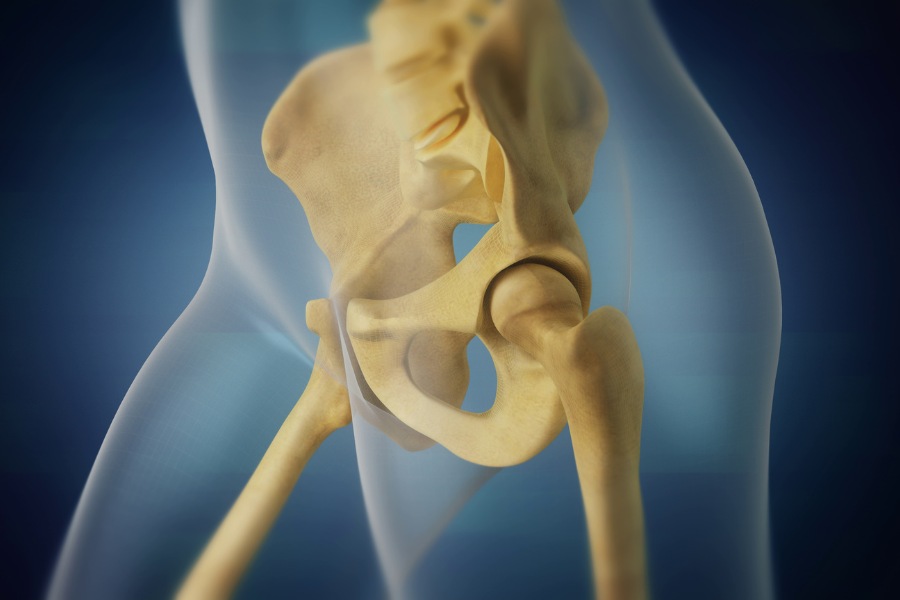Connection of hip pain and bladder function in a postpartum woman
INTRODUCTION
A 27-year-old woman presented with stress urinary incontinence, both hip pain (R>L), and right shoulder pain. Client is 7 weeks postpartum. Client had a quick birth within 30 min at home in January, 2022. Client was seen during her pregnancy from 37 weeks to 41 weeks. Client had a baby at 41 weeks. Client had 2 children prior to this birth. Client is an OB nurse and is on maternity leave at this time. Client is breast feeding her baby on demand.
CLIENT CHARACTERISTICS
The client had 3 natural births (9 year old, 3 year old, a newborn) with min to no tearing. The client had ℅ pubic symphysis pain since her second pregnancy. The client also have ℅ urinary incontinence with running after her second pregnancy. The client stated she pinched her ulnar nerve from the arm positioning while breastfeeding after her second child leading to ulnar nerve dysfunction. The symptoms have resolved now. The client had ℅ pelvic pain, hip pain (L>R), and stress urinary incontinence with transfers, coughing, laughing during her third pregnancy and she was referred for Physical Therapy. The client is a runner and she wanted to be able to run without ℅ pain and urinary incontinence. The client stated she always struggled with breathing while running since she was in her teens. The current complaints of client are both hip pain (R>L), right knee pain, right shoulder pain, urinary incontinence with sitting/standing/transfer/picking her baby, lifting, carrying, squatting, coughing/sneezing, and she has difficulty with functional activities. The client had c/o pain and pinching in right shoulder while trying to raise her arm overhead. The client c/o both hip and right knee pain with standing, sit to stand transfer, walking, and stairs. The client also have ℅ pain with sexual intercourse with a deep penetration.
SUMMARY
The whole body is connected through fascia. Fascia connects the muscles to muscles, muscles to organs. During pregnancy, the position of the fetus causes the organs to move on side or up. For example, the small intestine moves up, the bladder moves on the side. The movement of the organ along with weight of the fetus can affect the mobility of the fascia around the organs and muscles during the postpartum period. The postural changes during pregnancy can also affect the muscles and myofascial chain function. The breathing mechanics can also be affected by the position of the fetus and rib mobility. Now once the baby is born, the muscles and organs get confused in the body, they try to come back as much as possible. As every human is different, some women might have tightness of abdominal fascia/fascia around the viscera based on her postural changes before and during the pregnancy, childbirth position, stress levels, breathing mechanics, and even strength level. The bladder fascia is connected to the umbilicus via uracher ligament, hip muscles via OI foramen fascia, and pelvic floor. Many women with idiopathic hip bursitis, gluteus medius tear, hip enthesopathy during the first 2 years postpartum period have some connection with bladder fascia restrictions. They have some urinary urgency/frequency or incontinence symptoms going on, which they just blame it on childbirth or joke on social media how they cross their legs while sneezing/coughing or use the pads while jumping on a trampoline. These women tried to find answers, what did they do to hurt their hips? Or just minor activity aggravated pain. They cannot connect the bladder fascia restrictions to the contribution of the hip condition. Many of them go through a series of physical therapy without any relief if the bladder fascia is not addressed. They end up getting hip injections with some temporary relief and eventually accept that pain is common or I have h/o chronic hip pain. As much as hip mobility and strength are important for pelvic floor muscle.
My name is Neha Golwala,I am a PT specializing in pelvic health. I work with Zuppa Physical Therapy P.C. in Burnt Hills, NY. I have 14 years of clinical experience in orthopedic and working as a pelvic PT for the last 5 years. I love to work with women during their different phases of life and also chronic pain when there is not much hope. My company website is zuppapt.com and my email is neha.golwala@gmail.com

